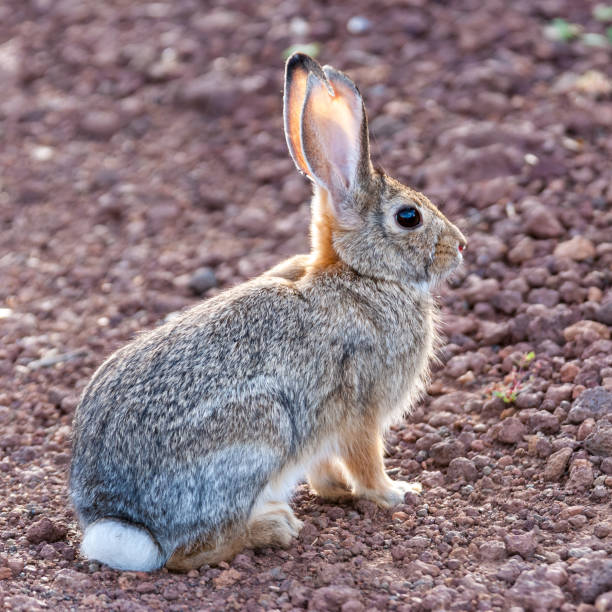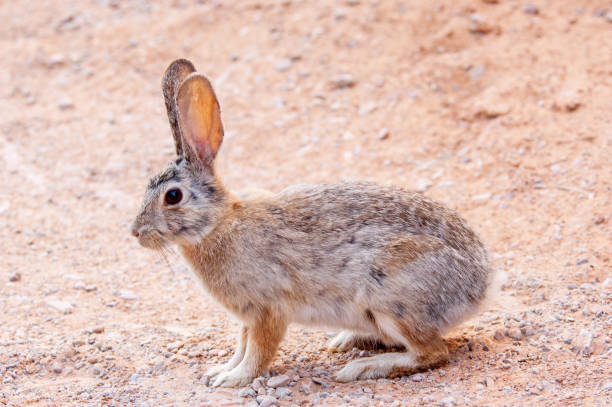
The Desert Cottontail (Sylvilagus audubonii) is a rabbit native to the American southwest from western Texas north to eastern Montana, and in northern and central Mexico. The cottontail gets its name from the grayish-brown tufted tail. The desert cottontail’s diet consists mainly of forbs and grasses. It can also eat many other plants including cacti. They can be seen foraging for their food in the early morning and evening. Since they get most of their water from plants or dew, they rarely need to drink. On windy days they remain in their burrows because the wind interferes with their ability to hear predators. Cottontails use burrows created by other mammals to give birth to their young. This desert cottontail was photographed near Walnut Canyon Lakes in Flagstaff, Arizona, USA.


























































